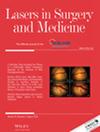254 nm Ultraviolet C Light Emitting Diode (LED) Radiation Enhances Wound Healing in a Rat Model of Full-Thickness Skin Defects
Abstract
Significance
254 nm short wave ultraviolet (UVC) emitted by low-pressure mercury lamp is effective in the treatment of skin wounds. With the emergence of deep ultraviolet light-emitting diodes (LED), it is expected to significantly expand the clinical indications of UVC. However, whether 254 nm UVC generated by LED light source can promote skin wound healing has not been reported.
Aim
To clarify the effect of 254 nm UVC-LED light source on promoting skin wound healing and explore the mechanism of UVC-LED promoting wound healing.
Approach
The full-thickness wound model of rat back skin was constructed, and the skin wounds of rats were treated with low-pressure mercury lamp and 254 nm UVC-LED equipment respectively. The curative effect of UVC-LED was determined by wound healing rate and histopathological changes. The expression of transforming growth factor-alpha (TGF-α), epidermal growth factor receptor (EGFR), cluster of differentiation 31 (CD31), cluster of differentiation 68 (CD68), vascular endothelial growth factor (VEGF) and the mRNA content of TGF-α, EGFR, tumor necrosis factor-alpha (TNF-α), interleukin-6 (IL-6), and VEGF were detected to clarify the mechanism of UVC-LED promoting wound healing.
Results
Histopathology showed that both low-pressure mercury lamp and UVC-LED irradiation could promote skin wound healing, reduce the degree of inflammatory response, and promote angiogenesis. UVC-LED could better promote collagen fiber proliferation. UVC-LED promotes the expression of key cytokines in wound re-epithelialization by increasing the levels of TGF-α and EGFR, dynamically regulates wound healing by bidirectionally regulating the expression of inflammatory factors TNF-α and IL-6, promotes wound angiogenesis by increasing the levels of CD31 and VEGF, and reduces and regulates inflammation by increasing the number of macrophages by increasing CD68.
Conclusions
254 nm UVC-LED can significantly promote skin wound healing in rats and play a role by regulating tissue regeneration cytokines, inflammatory factors and angiogenesis mechanisms.

 求助内容:
求助内容: 应助结果提醒方式:
应助结果提醒方式:


